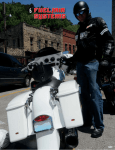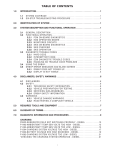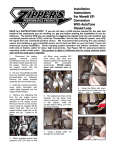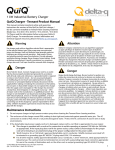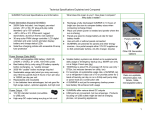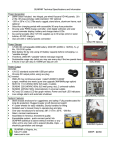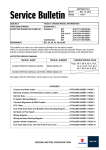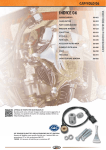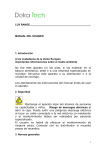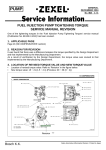Download Causes and Remedies for Starting Issues
Transcript
Causes and Remedies for Starting Issues If you are experiencing starting issues such as Hard Start or Engine Kickback, the first thing you should do is make sure you are running the latest firmware version. Although there are SEVERAL possible reasons for these problems, we have had great success in fixing this issue by simply updating firmware to the most current version. This should ALWAYS be your first step. Other possible causes: Low battery voltage Weak or bad battery; Cabling or Corrosion problems NOTE:if your battery is over 2 years old, it is approaching the end of its useful life and may be not delivering required power during start to the Thunder Max module. Bad primary compensator Harley upgraded all production models to the SE compensator in 2011 and up because of failing compensators. Engines 2006 and prior had little problem (smaller engines) with a different compensator. We recommend this upgrade as a "preventative" upgrade if nothing else. It provides better starting, smoother acceleration and better crankshaft life (We have updated our entire R&D fleet, very pleased with the results) This is a very common issue and has been found to cause "kick back" and nasty starting. Starter worn or damaged One particular case of bad starts was finally resolved when the STARTER BEARING totally failed. We learned as the bearing was slowly failing, the added load on the starter was robbing voltage from the battery, reducing the cranking speed of the start cycle. Bad kickback and nasty starts were the result. A new starter totally fixed this condition. If your engine has been modified with high compression and you are experiencing a starter kick back you should inspect the starter ring gear. Damaged ring gears should be replaced. If not equipped you may need to add compression releases to the engine or develop added dwell time to the Automatic Compression Releases( ACR) through the basic settings of your ThunderMax Automatic Compression Releases (ACR's) If you have a stalling type of start and the battery tests good, check to insure that your ACR's are turned on they are standard on 103" and 110" engine bikes. The ACR control function is under Module Configuration > Basic Settings> Comp Release Control -change to 1 to activate, 0 = deactivated > Write Module Settings. When the ACR's activate sometimes you can hear a click. They activate when the start button is depressed. To test refer to your H-D® service manual. Do not assume the ACR's are always good it is common for them to stick closed or partially open (normally easier to detect with a spitting sound as the air/fuel mixture from the compression stroke leaks past the ACR). * Tip- If you do not have automatic compression releases be sure to toggle them off in the software in the basic settings menu, otherwise you will have a check engine light and a P1655 ACR Low trouble code. Fuel-pump leaking pressure. Many fuel-pump problems are occurring on all models (Clogged Fuel filters plug, fuel lines are leaking, many will completely fail.) Fuel pressure should be 55-62 psi while running. If your system cannot sustain at least 50-52 lbs you should remove the pump immediately to investigate. After the main power switch is turned OFF the pressure should hold above 50 lbs for 1 minute. If the fuel pressure drops AFTER the pump stops, this reduction of pressure on the fuel rail will cause bad starts. The pressure may be fine while the pump/engine is running but during starting, a loss of pressure AFTER the pump turns off will cause bad starts. NOTE: Even though your engine might crank over and seem like "it should start”, if the output of the battery is lower than what is necessary for the module to function, it will struggle to start. So.... plenty to digest with all of these potential problems to investigate. Maybe they are all NEW. Don't assume even NEW batteries are good; they must be fully charged with a properly functioning charging system. NOTE:The best batteries we have found to date are the H-D units which are manufactured by Deka. Most aftermarket batteries have inferior terminal connections and have proven less reliable.



